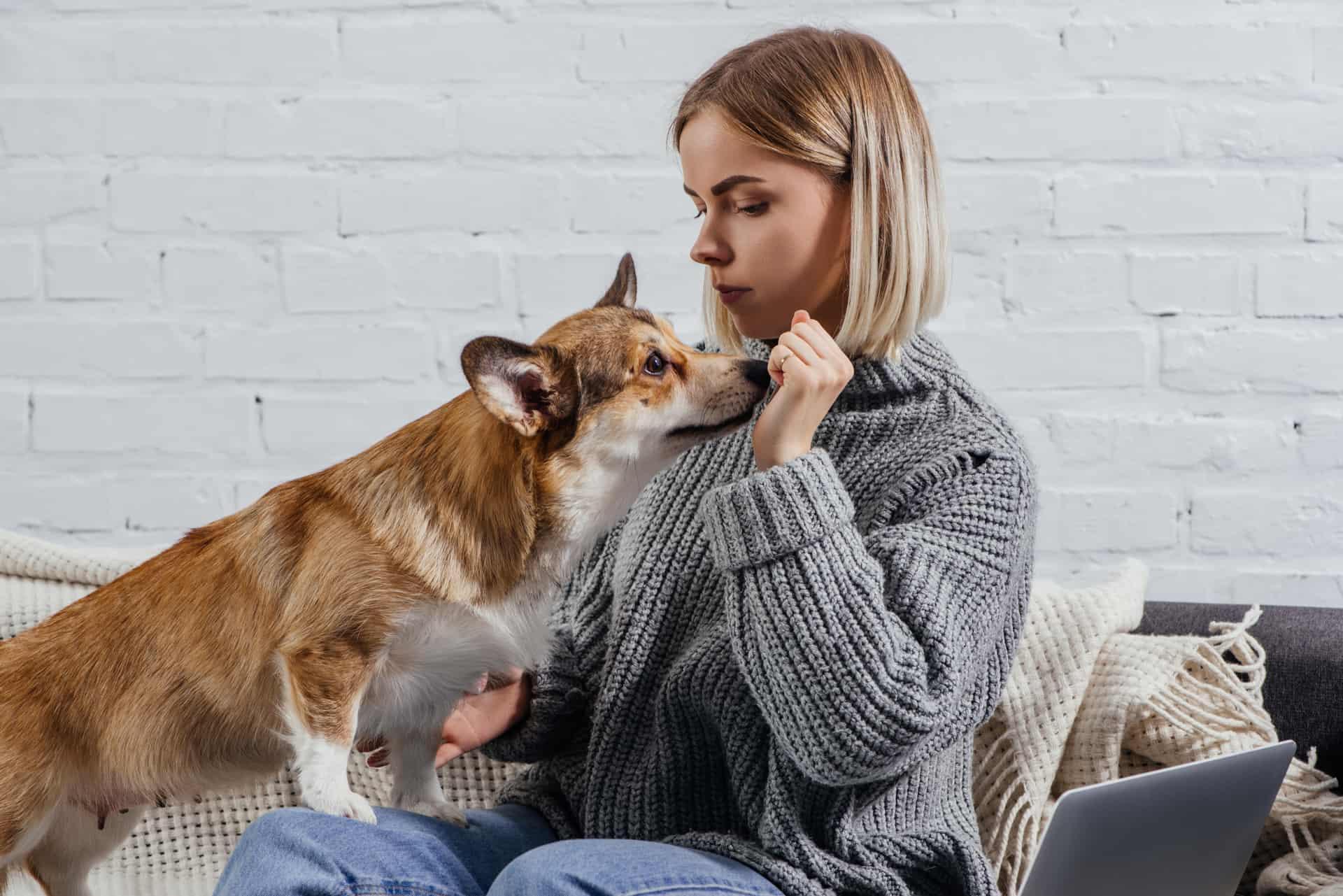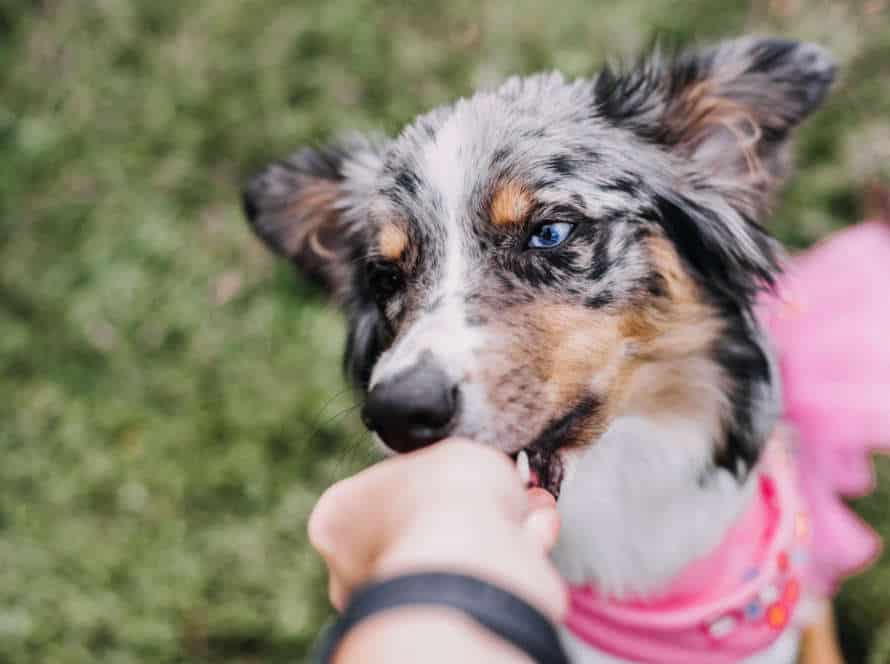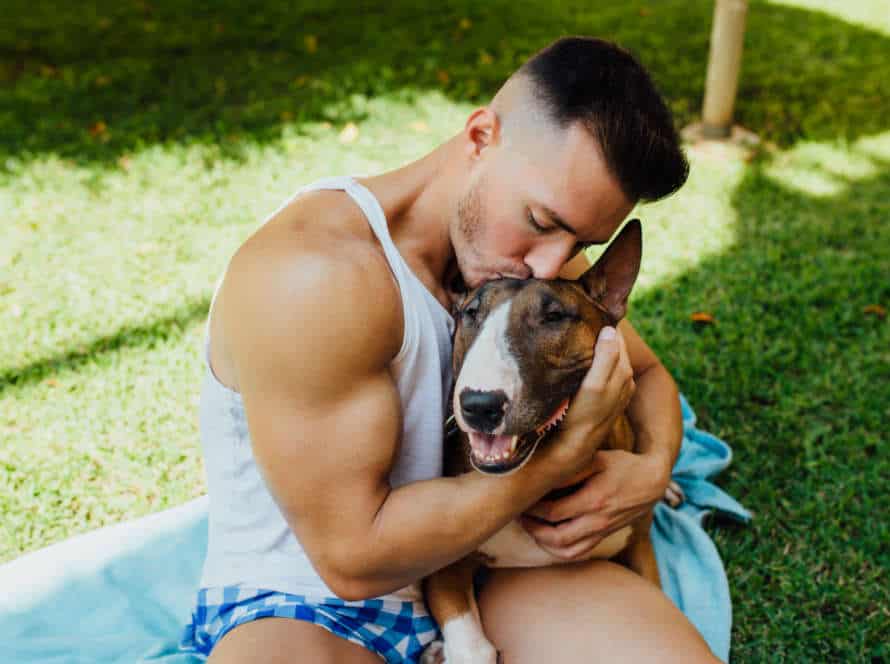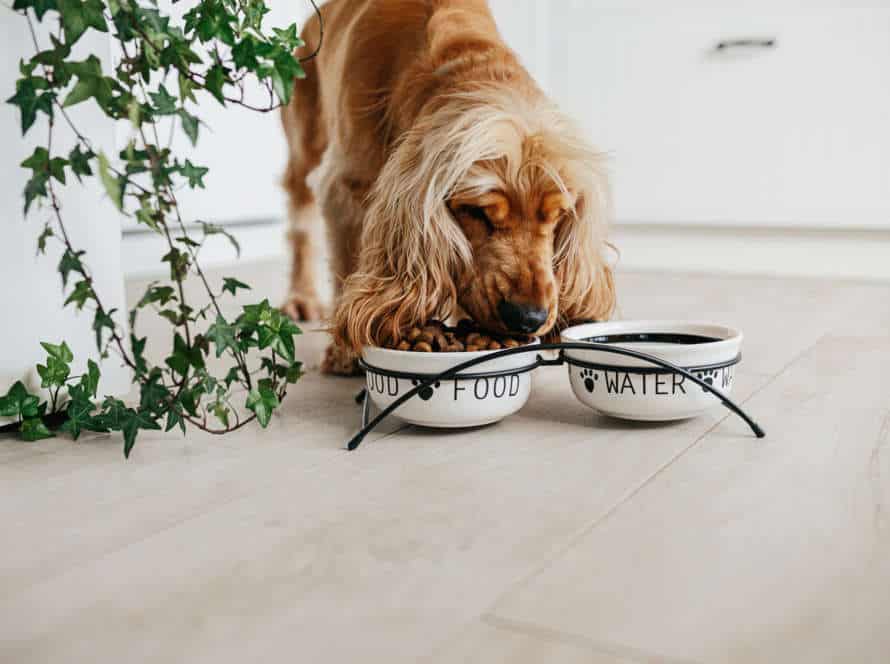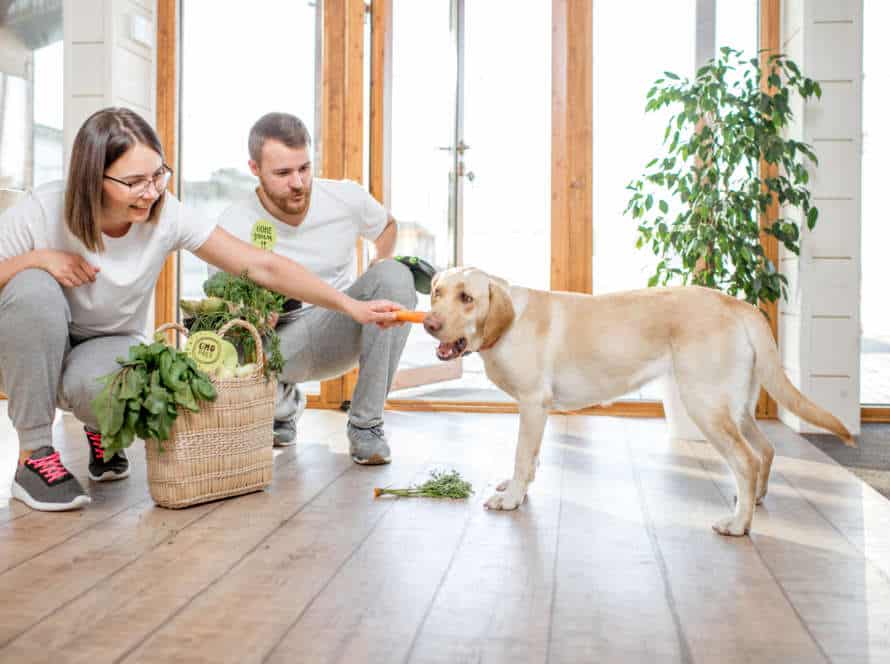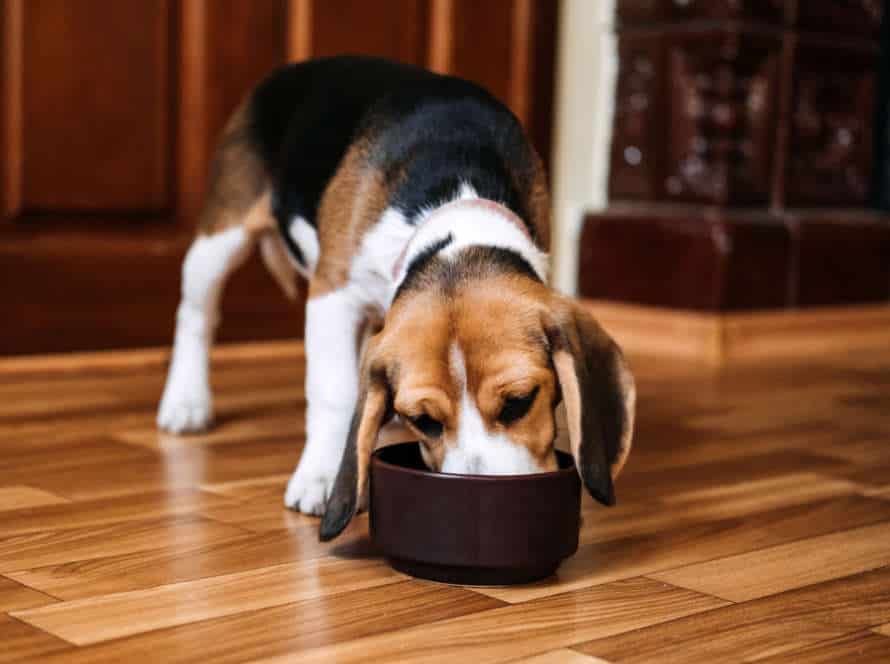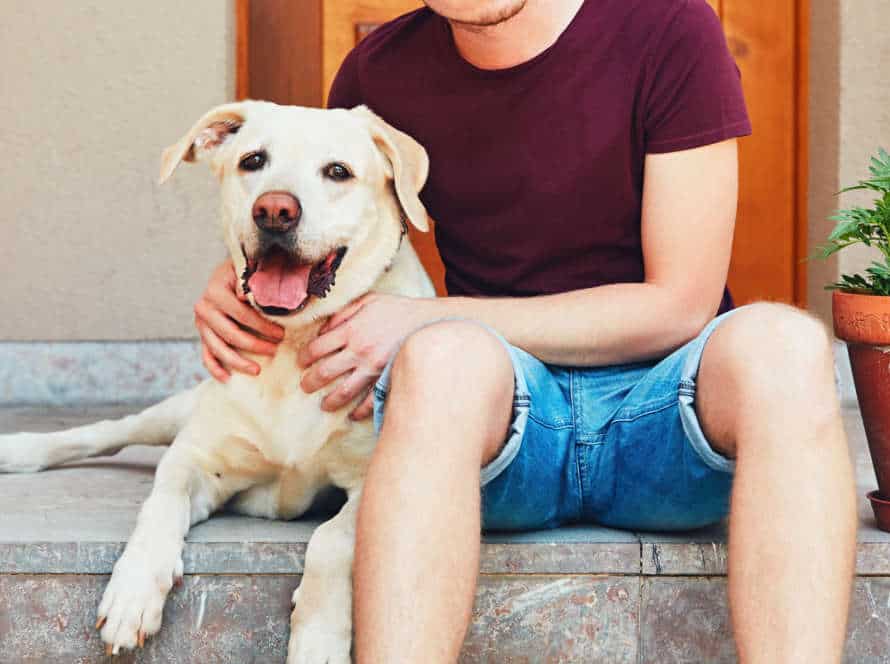Why Positive Reinforcement is the Best Approach for Training Your Dog
Positive reinforcement is the best way to train your pup. It rewards their good behavior instead of punishing bad behavior. This way, they learn to repeat the desirable actions rather than being scared or punished for mistakes. Here are 5 reasons why positive reinforcement is the best:
- It builds trust between you and your pup.
- It makes them more likely to repeat good behavior.
- Punishing them is not needed and reduces the risk of fear and anxiety.
- It encourages problem-solving skills and thinking for themselves.
- It’s a more enjoyable and humane approach.
Pro tip: Be patient with positive reinforcement. Reward good behavior consistently and don’t punish mistakes.
Understanding Positive Reinforcement
Positive reinforcement is a behavior management technique used to train animals, including dogs. It involves giving rewards when the dog shows the desired behavior. This encourages the pup to repeat it and reinforces it. Knowing the value of positive reinforcement and how to use it correctly is vital for successful training. Let’s look more closely at this concept and the best strategies to use when training your pup.
Definition of positive reinforcement for dog training
Positive reinforcement is a dog training technique that rewards good behavior and ignores or redirects bad behavior. Praise and treats motivate dogs to repeat the desired behavior.
It’s a non-punitive approach that builds trust between the dog and their owner.
You can use it to stop harmful or annoying behaviors and teach skills or tricks.
Understand the desired behavior and choose a reward that motivates your dog.
Reward consistently and avoid punishment or fear-based training.
Pro Tip: Positive reinforcement is powerful and has long-lasting effects!
The science behind positive reinforcement training
Positive reinforcement training relies on operant conditioning, which says behavior can be changed through results.
Positive reinforcement is the process of rewarding good behaviors to motivate them to happen again. It’s the most successful way to train your dog for these reasons:
- Trust and friendship between you and your dog will be strengthened. When you offer rewards for good behavior, your dog understands that you are a source of joy and kindness, which makes him feel even better towards you.
- Positive reinforcement is less stressful than punishment-based training. Dogs react better to positive reinforcement rather than fear, pressure, or pain.
- Positive reinforcement is a long-lasting approach, meaning it can create lasting changes in your dog’s behavior. Unlike punishment-based methods that may only bring short-term results.
To apply positive reinforcement training, use treats, compliments, or toys to reward good behaviors and ignore bad ones. This approach works best when used consistently and with patience.
Pro tip: Give high-value rewards like your dog’s favorite treat to inspire and reinforce his good behavior.
The advantages of positive reinforcement training
Positive reinforcement training is great for teaching dogs new tricks and correcting bad behavior. By using it, your pup will be happier and more motivated. There are many advantages to this type of training:
- Builds trust and confidence between you and your pup.
- Increases the chance that your pup will repeat desired behaviors.
- Rewards create a happy, motivated pup.
- Focuses on positive behavior, preventing negative ones.
Remember: Positive reinforcement produces a pup who trusts and respects you, knows how to act and makes life more enjoyable!
Positive Reinforcement Techniques
Make pup training fun! Positive reinforcement is an effective technique. It rewards dogs for desired behaviours. This encourages them to repeat these behaviours. It also builds a strong bond between you and your pup. Here’s some tips to use positive reinforcement when training your pup:
- Reward desired behaviour.
- Give pups treats or praise.
- Make it a fun experience.
Clicker training
Clicker training is a technique which uses a clicker and treats to give your dog instant feedback when learning. It is one of the most effective and humane methods.
Here is how it works:
- Introduce your pup to the clicker and link it to a treat.
- Click when your dog does something desirable, like sitting or staying.
- Reward them with a treat for the behaviour.
- Keep training sessions short to stop boredom and frustration.
- Be consistent and patient with clicker training. Avoid punishment-based techniques that can harm your bond.
Treats and rewards for good behavior
Positive reinforcement is the top choice for training your pup. Treats and rewards are essential to achieving desirable behavior.
Here are some treats and rewards your pooch will love:
- Treats: Meaty jerky, cheese, and peanut butter are all great treats. Cut them into small pieces for training sessions.
- Toys: Interactive toys like puzzle feeders and treat dispensing balls keep your dog mentally stimulated and provide a fun reward.
- Affection: Dogs need attention and love from their owners. Petting, praising, and cuddling also reinforce positive behavior.
Always use positive reinforcement techniques and rewards to encourage good behavior. This builds a strong bond between you and your furry pal, and will result in a happy, well-behaved dog.
Verbal praise and encouragement
Verbal praise and encouragement are powerful tools in positive reinforcement techniques. Making them the best approach for training your dog. Dogs love their owners’ approval and react well to positive reinforcement. Here are some tips:
- Use happy tones to show approval and encouragement.
- Say your dog’s name before giving a command.
- Give treats for good behavior and combine with verbal praise.
- Use specific phrases like “good boy/girl,” “great job,” or “yes!” to signal the desired behavior.
By using positive reinforcement such as verbal praise and encouragement, you can create a trustful connection with your dog while teaching them good behavior.
Common Training Scenarios Using Positive Reinforcement
Positive reinforcement is a great way to train your pup. You encourage the good stuff, and forget the bad! It’s super popular and works in many ways.
Let’s take a look at some of the common scenarios in which positive reinforcement can be used to help train your doggo.
House training
House-training is a vital part of dog ownership. Positive reinforcement works best for success in house-training and behaviour. Here are some common situations in house-training with positive reinforcement:
- Crate Training: Give treats and toys in the crate. Let the dog explore the crate of their own accord whilst being fed there.
- Potty Training: Offer rewards for going to the toilet in the right area. Use a phrase and give treats/praise following completion.
- Leash Training: Create a pleasant association with the leash. Reward your dog for walking on it. Ensure they get enough exercise and stimulation.
Positive reinforcement is much better than negative reinforcement or punishment methods.
Crate training
Crate training is a popular way to teach your pup or dog to feel secure in their crate. Positive reinforcement is the best way to train them, using treats, praise, and toys to reward them for good behavior and make the crate a happy place. Here are some important times to use positive reinforcement during crate training:
- Introducing your pup to the crate for the first time.
- Teaching them to enter and exit the crate on command.
- Making sure they stay calm while in the crate.
- Showing them that the crate is a safe and comfortable space.
Positive reinforcement will make them happy and confident while they learn, making it easier for them to see the crate as a safe spot and something to enjoy.
Leash training
Leash training is an important part of dog training. Positive reinforcement is the best way to train your pup. This method rewards your pup for good behavior, rather than punishing them for bad behavior. This helps to build trust, cooperation and respect between you and your pup.
To leash train your pup, use these steps:
- Get a collar and leash.
- Use positive reinforcement to reward your pup for walking calmly and correctly.
- Be consistent with praise and rewards, slowly increasing the length of each training session.
- Treats, verbal praise or both can be used to reward your pup for their calm behavior.
- Avoid negative reinforcement, like tugging on the leash, as this could harm your pup and ruin your relationship.
Tip: Have treats or use your pup’s favorite toy to keep them motivated. Positive reinforcement is key for happy, well-behaved pups!
Mistakes to Avoid in Positive Reinforcement Training
Positive reinforcement is the key to training your pup. But, it pays to know the goof-ups to dodge. This helps you get the most out of the training. Wrong rewards, too easy tasks and over-reliance on treats can be the mistakes. Let’s go into further detail and make sure you train correctly!
Over-relying on treats
Positive reinforcement is a great way to train your pup. But relying too much on treats can stop progress and cause bad habits. Here are some common mistakes to stay clear of:
- Overdoing it on the treats. If you give too much, they’ll only do things for a reward, not because they learned it.
- Being inconsistent. If you act different each time, they won’t understand and will have trouble learning.
- Too much or too little time. Spending too much or too little time on training won’t help, especially with puppies.
- Punishing your dog. Positive reinforcement works best and punishment can slow them down.
- Ignoring their needs. To help them learn, you must address issues like stress or anxiety.
Remember, a well-trained pup is happy and healthy. Avoid these errors and you’ll see the benefits quickly. Pro tip – Pay attention to what motivates them and change your approach accordingly.
Inconsistency in training techniques
Avoid inconsistency when training with positive reinforcement. It can lead to confusion & frustration for your pup. This approach rewards good behaviour with treats, praise, or playtime. It’s the most effective way of training.
Here are some tips:
- Set clear rules & routines and stick to them.
- Use the same commands & signals each time.
- Reward pup immediately after desired behaviour.
- Don’t use punishment or negative reinforcement. Focus on positive reinforcement to support good behaviour & strengthen bond.
Not understanding your dog’s individual needs and limitations
It’s critical to grasp your dog’s personal needs and borders when you use positive reinforcement to train them.
Common mistakes to dodge include:
- Not being aware of their physical and emotional restrictions. Some dogs have mobility issues, allergies or fear and anxiety problems that you must adapt your training for.
- Not considering breed-specific qualities. Dog breeds have various temperaments, behavior tendencies, and learning capabilities that you should think about.
- Not being consistent in the teaching process. Positive reinforcement calls for regularity, repetition, and patience. If you change your approach and criterions, your dog may become perplexed, worried, or uninterested.
Pro tip: Monitor your pup’s body language and action for signs of stress, boredom, or frustration. This may suggest you must alter your training plan to better match your dog’s needs.
Long-term Benefits of Positive Reinforcement Training
Positive reinforcement training is the way to go for training your pup! It encourages good behavior with rewards and helps your pet understand what you expect. This training has tons of long-term advantages. The relationship you share with your pooch will get better, and they’ll be more likely to follow your commands. Furthermore, this type of training can reduce any stress your dog might have, as well as other behavioral problems. Let’s get into the perks of positive reinforcement training!
Stronger bond between owner and dog
Positive reinforcement training is a great way to make a closer connection between pet and owner. It promotes trust, respect, and communication. Instead of punishing bad behaviour, rewarding and praising good behaviour encourages it. These are the long-term benefits:
- Obedience and Reliability – Using positive reinforcement to train your dog will teach them that behaving well leads to positive results. This encourages them to do it more often, making them dependable and obedient in the long run.
- Building Trust and Confidence – Praising and rewarding your pup for their good behaviour helps them to trust and rely on you. This makes them feel more secure and strengthens the bond between you two.
- Reducing Aggression and Anxiety – Positive reinforcement training will create a relaxed, positive setting for your pup. When they feel secure and praised, they are less likely to get angry or anxious.
Positive reinforcement training offers a safe, loving atmosphere for your pup to thrive in. It builds trust and regard, creating a strong relationship between you and your beloved pet.
Increased obedience and responsiveness to commands
Positive reinforcement training for your dog brings lots of long-term benefits. This type of training means rewarding your pup for good behavior and ignoring bad behavior. No punishments! Here’s why positive reinforcement is the best approach for training your pup:
- Stronger Relationship: It builds trust between you and your dog.
- Happier Environment: No stress or damage like punishing does.
- Better Long-term Results: Your pup will want to please you, leading to better behavior.
In summary, positive reinforcement training is humane, effective, and leads to increased obedience and responsiveness as well as a stronger relationship and happier environment.
Improved behavior and temperament in social situations
Positive reinforcement training is a successful way to better your dog’s behavior and temperament in social settings. This method rewards good conduct with treats, compliments, and love, not punishing bad behavior. This has long-term advantages.
Here are some examples of how positive reinforcement training can help:
- Cut back on anxious and fear-based habits, like barking, snarling, or biting.
- Raise self-assurance and trust.
- Enhance social abilities towards other dogs and people.
- Improve responsiveness to orders.
Positive reinforcement training builds a positive and joyous atmosphere for your dog, leading to an enhanced emotional and behavioral state.
Frequently Asked Questions
1. What is positive reinforcement?
Positive reinforcement is a training technique where desirable behaviors are rewarded to encourage their repetition. It involves providing your dog with a treat, praise, or another pleasant stimulus immediately after they exhibit a desirable behavior.
2. Why is positive reinforcement the best approach for training dogs?
Positive reinforcement is an effective training technique because it strengthens the bond between you and your dog. It promotes learning by creating a positive association with training, making it more enjoyable for your dog. This training approach is also humane and gentle, which helps to build trust between you and your dog.
3. How does positive reinforcement differ from punishment-based training?
In punishment-based training, undesirable behaviors are punished through harsh, unpleasant, or painful stimuli. This can create a negative association with training, may cause your dog to become fearful or anxious, and is not proven to be effective long term. Conversely, positive reinforcement focuses on rewarding desirable behavior, which is a gentle and humane method of training and has been shown to be highly effective.
4. Are there any negative aspects of positive reinforcement?
While positive reinforcement is an effective and humane training technique, it is important to ensure that treats or other rewards are provided in moderation. Overuse of treats can lead to your dog becoming overweight or developing unhealthy eating patterns. Additionally, using the wrong type of reward (such as food) can cause your dog to become overexcited or hyperactive instead of calmly responsive.
5. How can I implement positive reinforcement in my training routine?
You can implement positive reinforcement in your training routine by using treats, toys, or praise when your dog exhibits desirable behavior. Begin by selecting a specific behavior you would like to reinforce and consistently rewarding your dog when they perform it. Gradually increase the difficulty of the behavior to encourage growth and learning. Be patient and consistent with your training methods to achieve the best results.
6. Can positive reinforcement be used to train any dog?
Yes, positive reinforcement can be used to train any dog, regardless of breed, size, or age. It is a humane and effective training technique that can improve the behavior and obedience of your furry friend. However, it is important to remember that each dog is unique and may require a slightly different approach to training.

